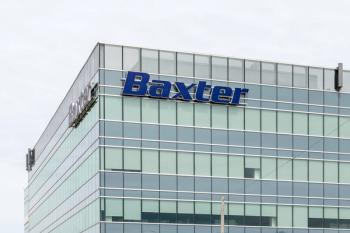
Accurate provider directories are key to better patient care, lower costs
Incorrect physician information leads to administrative waste, lost revenue
Provider data inaccuracies continue to disrupt the health care system. Payers must have the most up-to-date information to properly reimburse providers and health systems. However, getting payers the information they need to update their directories on time presents a major hurdle for providers. Agnostic solutions that facilitate
Health care providers in the U.S. carry a heavy burden: deliver quality patient care and be full-time administrators. Physicians already spend too much time on nonclinical tasks, with the latest
In 2023 JAMA Network Open published a study by researchers from the University of Colorado School of Medicine and HiLabs that found that manually sending directory updates to insurers via disparate technologies, schedules, and formats costs practices a collective
The same study assessed the consistency of physician information across directories from five large national health insurers and found that
The fact is that providers, payers, and patients all have a stake in this game. The University of Colorado/HiLabs study underscores the need for unified, technology-enabled solutions, such as a centralized physician directory
Let’s look at some of the ongoing consequences of inaccurate data rosters:
Administrative waste: Inaccurate data rosters received from providers impact the quality of services and create extra work for physicians already dealing with burnout. Shifting the responsibility for updating the data back to providers is impractical.
Revenue leakage: Outdated data can mean missed opportunities to see new patients. When a patient can’t find the right provider to meet their needs, they will seek care elsewhere. For example, a patient could search for a provider in a specific ZIP code who holds certain office hours or speaks another language. Each instance of incorrect data can make or break a patient's choice to select a provider and increases revenue leakage with time.
Price transparency: Patients want to know the cost of services and may want to compare provider pricing. Accurate provider data enables clear communication regarding deductibles, copays, and in-network providers so they can make better-informed decisions and helps ensure No Surprises Act compliance.
Impact on health outcomes: More important than fines or administrative waste is the very real human cost at play here. Proper synchronization of information within organizations and with external partners is critical because patients often do not have the luxury of waiting for care. When seeking service through a health plan, they rely on providers who meet their individual needs and preferences, such as location, specialty, and costs. Inaccurate data in online directories has a ripple effect that can cause care delays and lead to costly medical bills that disrupt care entirely.
Proper synchronization of information within organizations and with external partners is critical. Still, it is nearly impossible to simplify provider data analysis using ongoing data updates alone, due to the lack of infrastructure to handle all the tasks required to verify and update the data.
Ideally, accurate, up-to-date provider data enable providers to maximize the value of their provider network, leading to increased revenue, better relations with payers, and improved claims data. Simplifying and automating provider data management for payers and providers at scale will help capture up to billions of dollars in lost revenue.
The natural disorder of data
To understand why health plans and providers need a product that streamlines provider directory management, it's helpful to understand what makes them so complicated and expensive to maintain in the first place. These challenges include:
Dynamic and incomplete data: Provider details such as location, specialties, contact information, and network affiliations are subject to frequent changes. Additionally, incomplete information or restricted networks pose challenges for patients seeking covered providers.
Lack of standardization: Medical practices often contract with dozens of health plans, each with different forms and methods of sharing provider information. This lack of uniformity results in providers using various software platforms and communication channels such as fax, email and phone calls, complicating data exchange.
Non-compliant records: Current directories often lack the capability to identify non-compliant entries, hampering regulatory adherence and data accuracy.
Data volume: Implementing the No Surprises Act has compelled providers to submit data more frequently to avoid non-compliance, overwhelming health plans responsible for directory management.
When you add up all these factors, it is nearly impossible to simplify provider data analysis and ongoing data updates alone due to the lack of infrastructure to handle all the tasks required to attest and update data. The call for a
Achieving a single source of accurate data
With health plans still responsible for maintaining directories, solutions that eliminate data silos, establish a standard process, and automate directory maintenance are more important than ever. Addressing these challenges requires agnostic solutions for accurate data exchange.
By embracing data management platforms that centralize data exchange between providers, payers, and other stakeholders, the burden on providers can be alleviated while improving the accuracy and efficiency of directories. It will only happen through collaboration as payers and providers need each other to navigate the complexities of health care data exchange and ensure better outcomes for everyone.
Eric Demers is CEO of
Newsletter
Stay informed and empowered with Medical Economics enewsletter, delivering expert insights, financial strategies, practice management tips and technology trends — tailored for today’s physicians.



















